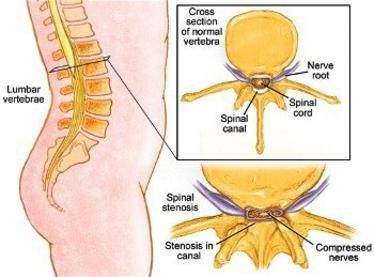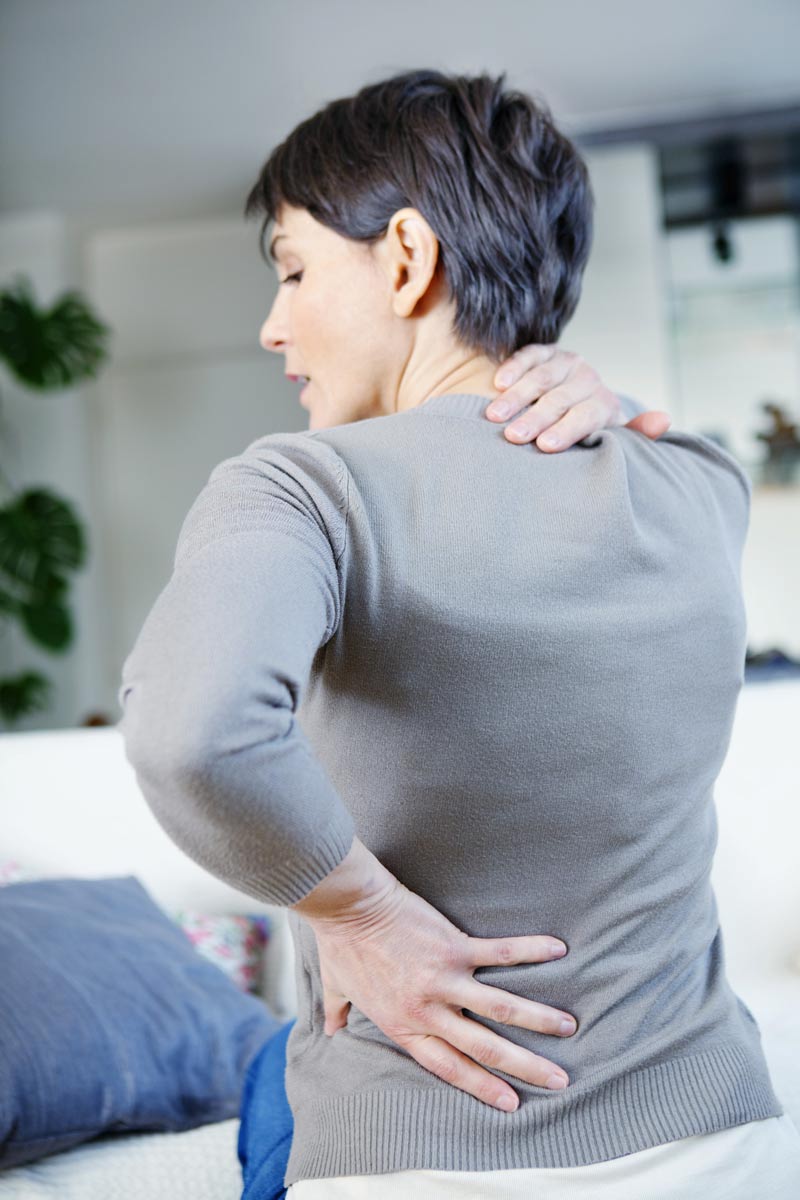Spinal Stenosis of the Lumbar Area in Jacksonville, FL
As people age, they often develop conditions that effect their mobility and flexibility.
One of the most common and most noticeable age-related conditions is lumbar spinal stenosis, or the narrowing of the spinal canal. Many people recognize spinal stenosis as a condition that causes sufferers to develop a “hunchback” and also walk with a slower, more rigid shuffle or gait. In reality, its onset signifies that the sufferer may experience debilitating pain and the inability to move about normally. While some cases of lumbar spinal stenosis are brought on by people's inactive lifestyles, others are caused by degenerative diseases that may have been unpreventable.
Common Causes of Spinal Stenosis
- Thickened ligaments
- Bone spurs / Arthritis
- Infections that have expanded into the spinal canal
- Abscesses
- Congential diseases
- Degenerative changes in the body
- Vertebral fractures and injuries such as subluxations, dislocations, spondylolisthesis etc...
- Tumors in the spinal canal
- Prolonged steroid use
- Injuries like bulging discs, herniated discs, and soft tissue damages
- Paget's disease, characterized by weakened bones
Despite these obvious signs of stenosis, it can often be misdiagnosed or confused with other illnesses and injuries. Some of the more common conditions that are misdiagnosed as stenosis include vascular claudication, peripheral vascular disease, and aneurysms in the aorta. It should be noted that claudication and stenosis can be differentiated by the level of activity possible by the person in question. Someone who suffers from claudication in the legs will most often be unable to stand or walk for long periods of time. However, someone who suffers from stenosis will be unable to peddle a bicycle or walk uphill, activities that are possible by a vascular claudication patient.
Symptoms of Spinal Stenosis
- Lower back pain
- Loss of feeling in the upper areas of the legs
- Generalized pain
- Loss of balance and limping
- Preclaudication, or pain in the legs after prolonged standing or walking
- Tingling in the legs and back
- Sensations of hot and cold in the legs
- Muscle spasms
- Muscular weakness

Diagnosing and Treatment of Spinal Stenosis
Along with looking for the tell-tale signs of stenosis like a hunched posture or a slowed gait, doctors in Jacksonville Florida and other places likewise will utilize a host of diagnostic tools to determine if someone suffers from this condition. Tests like MRIs are generally discounted because they fail to predict the level of disability the person may experience, just because there is narrowing of the spinal canal does not necessarily mean there will be a problem. Although MRI can be a powerful tool used to identify the structure causing the narrowing i.e. tumor, infection, herniated disc, bone spur etc… However, tests like an electrodiagnostic study will be able to provide the proper insight into a person's neurologic integrity and pinpoint damages that go hand-in-hand with this illness.
Along with electrodiagnostics, doctors in Jacksonville Florida and elsewhere use blood work and other tests to determine if the stenosis is caused by infections or tumors. Once they know what may have caused it and to what level it has progressed to, doctors can then formulate the best plan of treatment for the patient.
It should be noted that most doctors will not recommend that stenosis patients undergo surgery unless they suffer from some of the most extreme consequences of the disease. These consequences that permit surgery include:
- Tumors
- Intolerable pain
- Severe neurological issues
- Progressive muscle weakness
- Loss of bladder function
- Inability to control the bowel
The surgery itself entails the opening of the spinal canal to relieve the pressure and pain. It also may require that bone structures be removed to prevent pain and pressure in the future.

It is generally not recommended that people go through surgery too many times because each procedure changes the formation and flexibility of the spine. Likewise, some people may not be good candidates to take powerful prescription pain medications, even if the medications are effective in eliminating their pain, because of the side effects that the drugs can have, such as causing people to lose their balance or any potential addiction concerns with medications.
With that, stenosis patients have shown promise of responding better to chiropractic care than some of the other types of treatments available for this condition. Chiropractic care can involve distraction manipulation, which is effective in reducing leg pain and stiffness. Non-Surgical Spinal Decompression is a fantastic tool to help open up the crowded areas of the spine thereby reducing pain and increasing function. It also may involve the use of exercises, such as riding a bike or lying on one's side while holding onto the knees, to increase a person's spinal flexibility and to reduce the pain commonly associated with this disease. As people continue to utilize these activities four or five times a week, they may regain muscle strength and also rely less often on conventional medical treatments like over-the-counter or prescribed painkillers.
Stenosis of the lumbar spine is a condition that generally cannot be cured. However, it may be effectively managed with chiropractic care. Patients interested in avoiding surgery or having to take powerful painkillers are advised to work with a professional licensed chiropractor.
